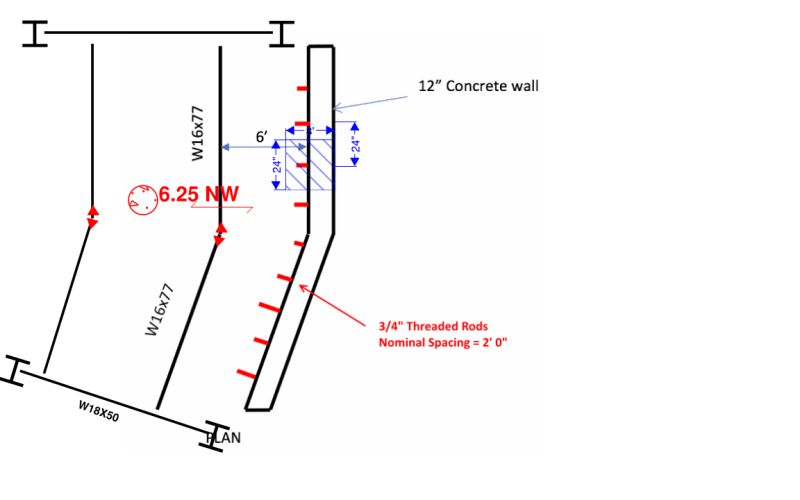jseng9
Structural
- Oct 27, 2017
- 53
I need to check the capacity of an L3xL3x1/4” angle supported by (3/4”) diameter bolts embedded 3-3/4” into a concrete wall spaced 24” on center to support the edge of slab of a parking deck. The bolts are epoxied with HILTI RE 500 v3 epoxy. The angle is supporting 6’ tributary width of slab. Loads I need to account for are 4.25” concrete on 2” metal deck + 25 PSF SDL + 40 PSF LL.
I’m very new to steel design and don’t have experience with design of angles or connections. Some things I think I need to account for are: flexure of the angle, yielding of the bolt hole, shear of the bolt, pull out from the concrete. The issue is I have never checked any of these things before and would really appreciate it if someone would be able to walk me through the steps or point me to references for checking these things.
I’m very new to steel design and don’t have experience with design of angles or connections. Some things I think I need to account for are: flexure of the angle, yielding of the bolt hole, shear of the bolt, pull out from the concrete. The issue is I have never checked any of these things before and would really appreciate it if someone would be able to walk me through the steps or point me to references for checking these things.

![[wink] [wink] [wink]](/data/assets/smilies/wink.gif) Don't read the following:
Don't read the following:![[idea] [idea] [idea]](/data/assets/smilies/idea.gif)
![[r2d2] [r2d2] [r2d2]](/data/assets/smilies/r2d2.gif)
